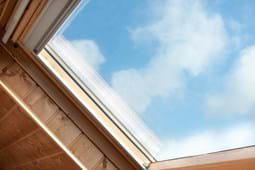
Will my loft conversion staircase comply with building regulations?
Project type
Loft staircases are often built directly above your home’s existing set of stairs. This may be the best place to continue the staircase but can also give a feeling of continuity. As you might expect, your loft stairs need to meet building regulations standards to reduce the possibility of collisions and injury from falling.
The important points
- The top of the stairs needs to be positioned at the highest part of the loft.
- There needs to be 2m of clear headroom over the stairs, although the regulations allow this to reduce to 1.8m at the lowest point if the stairs are under a sloping roof.

- The pitch or angle of your stairs should not be more than 42°.
- The riser of each stair (the vertical part of the stair) should be a minimum of 150mm and maximum of 220mm in height and the going (the part that you step on, measured from nosing to nosing) needs to be at least 220mm and no more than 300mm.
- You must include a handrail. This needs to be between 900mm and 1000mm high.
- If the stairs are exposed at any point and are higher than 600mm, balustrades (at least 900mm high) need to be added. If you’re installing stair spindles, the maximum distance between them needs to be less than 100mm. This is a safety precaution to prevent people (generally children) getting stuck between spindles.
- As mentioned under the fire safety section, you’ll need the staircase to be fire-resistant for a minimum of 30 minutes. This also applies to any glazing you have within the stairwell.
- There is no minimum width for your loft stairs, but make sure they're wide enough for you to use them comfortably and to be able to escape safely, should you need to. Plus, you need to be able to get whatever furnishings you want up into your loft rooms via the stairs.
- There should be a landing at both the bottom and top of the stairs and the width and length of these should at least be the width of the stairs.
Variations to traditional stairs
Where space is tight, you may be able to opt for a non-traditional staircase:
- Alternating tread or paddle staircase. This is a staircase where part of the tread is cut away. It relies on being familiar with how to use them. It should only be used for a straight staircase to a single habitable room, where there isn’t enough space for a traditional staircase. In this case, there should be handrails on each side and steps should be uniform, with slip-resistant treads.
- Fixed ladder. This cannot be a retractable ladder, must have handrails on both sides and can only be used for a single room conversion.
- Spiral or helical staircase. These can be used providing they conform to the pitch and tread requirements listed above for normal loft stairs with winders.
Further information
For further details on stair design that complies with the building regulations, view Approved Document K.
Also, view our building regulation FAQs.
Useful guidance

Loft conversion windows - common questions
Read article
Do I need to make my loft conversion soundproof for building control approval?
Read article
Why is ventilation important for a loft conversion?
Read article


